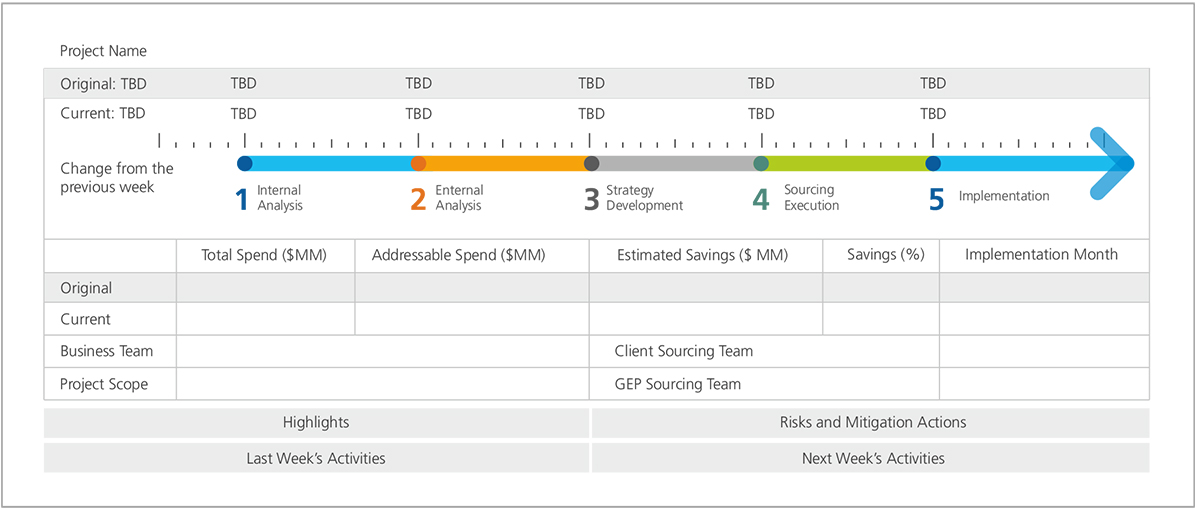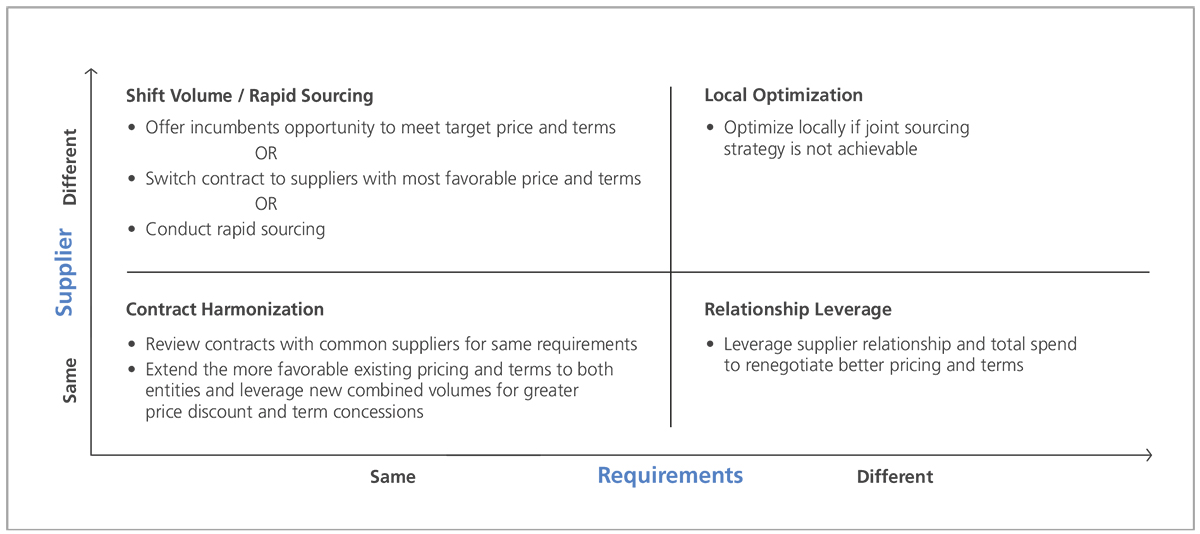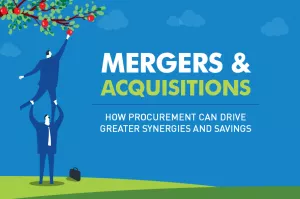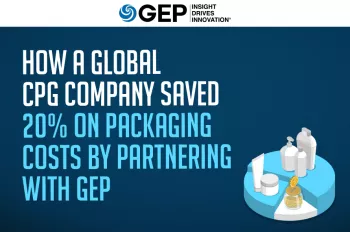Introduction
The current business environment is unpredictable — challenges and volatility have set the stage for businesses to acquire or to get acquired. With every corporate merger or acquisition, the enterprises involved must overcome a variety of process- and operations-related obstacles, and optimally put to use the procurement best practices of each individual organization to take the combined entity to the next level.
Mergers and acquisitions are all about realizing synergies between the enterprises involved. Procurement can make a very substantial contribution in this context by executing a well-planned, M&A-focused sourcing program. This paper details four critical parameters necessary to create and sustain synergies between the enterprises involved, and highlights key strategies for success of the larger enterprise.
Two good adjectives for the current state of the global business landscape are “challenging” and “volatile.” This environment typically sets the stage for an uptick in consolidations and merger activities. In 2015 alone, global M&A activity touched $4.9 trillion USD, beating the record of $4.6 trillion set in 2007, according to statistics from Dealogic. We can safely say that having the experience and knowledge to successfully navigate and implement the enterprise-wide goals of a corporate consolidation has never been more important.
When one company acquires another, a formal sourcing engagement can help drive synergy savings between the two companies. There are four core components to ensure these synergies are actualized from an acquisition: communication; execution; senior leadership engagement; and finally, support and change management. Each of these has its own set of complexities that need to be evaluated to achieve the synergies’ full potential and drive success for the new organization.
Communication
Initiating communication around a new sourcing program is important, more so when there is the added complexity of an acquisition and two different organizations and cultures come together. “Early and Often” should be the motto of communication for any M&A sourcing program and should comprise three main components: project kickoff communication, ongoing communication and recognition communication.
Project Kickoff Communication: This communication should include everyone in the organization to build excitement and provide information about the sourcing program's goals. The rules of engagement and roles and responsibilities should also be communicated, and concerns must be addressed. With kickoff communication, enterprises should lay out the short- and long-term plans to achieve the program goals and then focus on projects that will commence within six months. This type of communication gives everyone a perspective on the assignments and changes that can be expected in the short term, and also helps enterprises align for long-term goals.
Ongoing Communication: This mode of communication should highlight day-to-day project activities within individual project teams. In addition, at a program level, structured flash reports updated on a weekly or biweekly basis are essential for the enterprise C-suite or decision-makers to quickly track the status of projects, thereby boosting transparency and knowledge.

Similarly, program financial reports should also be updated and shared consistently to highlight the identified and realized savings and when to expect them in the P&L statements. This will help the finance team with projections and showcase success of the program.
Recognition Communication: This is a key element within the communications activities of the consolidating procurement organizations. When large savings numbers are realized or a very complex project that delivered value to the enterprise has been successfully completed, it should be celebrated and communicated to everyone within the enterprise. This can be accomplished through an article on the company’s intranet or in the form of awards at a town hall. Though recognition is a core component of any program, it is vital for M&A sourcing programs because it highlights employees’ contributions and serves as a positive reassurance of job security and their future with the company.
Execution
The different phases of a sourcing engagement within a merger or acquisition include pre-acquisition due diligence, post-acquisition due diligence, contract harmonization, consolidated sourcing and process improvements. Each phase is important to drive the total value proposition of the acquisition and leverage the scale of the new company. The first two phases — pre-acquisition due diligence and postacquisition due diligence — include a comprehensive review and creation of an execution plan, typically over a two- to three-year period. The last three phases — contract harmonization, strategic sourcing and process improvements —focus on executing this plan to generate value for the enterprise.
Pre-M&A Due Diligence: In this phase, it’s important to conduct an assessment and gauge the value of an acquisition via sourcing. In this due diligence process, a “Clean Room” is created, and the two firms can share confidential documents and key contracts securely. Based on key contracts, supplier leverage, and current operational metrics, high-level savings targets and goals can be set.
Post-M&A Due Diligence: During this stage of the engagement, a thorough review of the opportunity should be conducted. This should include all contracts and spend to review category opportunities and establish savings targets. This stage will also produce a wave plan of sourcing activities based on opportunities, resource availability, project roadblocks, project sensitivity, quick wins and contract harmonization. The wave plan should cover the first 24 to 36 months of sourcing activities.
Harmonization: After the consolidation, contract or supplier harmonization should be examined using a four box model. The core box to be reviewed is the “Same Supplier — Same Services” box. To ensure the evaluation is correct, contracts should be reviewed, stakeholders interviewed and discussions with suppliers need to be initiated. Once the review and discussions occur, it is best to create a matrix of pricing, services, SLAs and contract terms, and build a negotiation plan.
Strategic Sourcing: Strategic sourcing activities include normal activities to run the sourcing process: data collection, internal analysis, external analysis, sourcing execution and implementation. This process will evaluate the marketplace for best-in-class suppliers and then negotiate with them to obtain substantial savings for the organization.

Process Improvements: The sourcing process will frequently identify business process improvements that can achieve additional savings. If these are simple and easy to implement, they should be initiated immediately. Longer-term process improvements, once identified, should be added to the wave plan with appropriate savings targets to ensure effective implementation. In addition, procurement should facilitate the change in business to capture the value associated with that change.
Senior Leadership Engagement and Support
To realize the full value of a merger or acquisition, tough decisions are required. Suppliers may be changed, operational processes modified, risks assessment conducted, and the best long-term actions determined for the organization.
To effectively implement such changes and drive success, the presence of a senior-level sponsor and formation of a steering committee is critical. The sponsor must be updated weekly on the status of various projects and should assist in selling-in or communicate the plan for execution to ensure strategic projects deliver the desired results.
The crucial cross-functional steering committee, which will reinforce the program, should have senior leadership involved from various departments and business units that will be impacted by the change. The steering committee members can help communicate key insights into their businesses, call out risks, and drive the right decisions downward to execute a successful program.
The steering committee should meet either monthly or quarterly to receive program updates and discuss key projects with a list of actionable items to advance the project toward successful completion. The committee must assist in the success of the program by helping to push the right organizational behavior.
Change Management
When two entities integrate, changes related to culture, organizational norms, process, goal setting and incentives are the norm. Complexity with regard to changes in leadership structure adds to this uncertainty. These areas should be reviewed and understood at the beginning of the program, and then reiterated at the start of each project to ensure alignment.
In an M&A sourcing program, it’s critical to work toward correlation of the goal and incentive structure. All parties need to pursue the same goals, to ensure there are no lost opportunities or impacts on the enterprise's savings targets.
Additionally, the influence of company cultures must be appreciated. The culture of an organization will dictate how one might approach a conversation, meeting or presentation — whether one would be asking for permission for something, issuing a directive, or simply providing data to assist in the decisionmaking process. When two entities come together, culture will impact the success of a project, and so there should be clear understanding on “this is how we do things” between both companies. Remember the phrase “culture eats strategy for breakfast”? Lack of understanding and appreciation of this phenomenon will seriously impede progress and lead to low morale.
Conclusion
A well-executed merger or acquisition essentially opens the door for procurement to take on greater responsibility in its persistent quest to unlock new areas of value and drive more cost savings. The four components discussed in this paper provide an excellent programmatic framework, but keeping the team motivated is the real key to achieving the overall objective. In the long run, this will not only help during the transition phase, but also elevate procurement’s standing within the business and help transform it into a true strategic partner within the enterprise.



